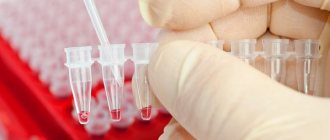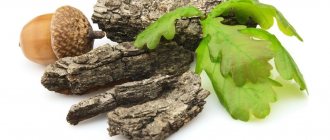Why some newborns suffer from gas formation in the tummy and others do not is unknown, but most often the first option occurs. Seven out of ten babies experience pain and discomfort from two weeks to three months, so young mothers should know in advance how to alleviate the baby’s condition and what means and methods need to be adopted.
Why do gases appear?
Bloating, increased gas production - all this is summarized by doctors and parents into the more familiar word “colic”. This problem occurs in newborns for several reasons:
- Not fully developed digestive system due to infancy;
- Foods consumed by the mother that cause flatulence;
- “Swallowing” air during feeding;
- Allergies to medications, food;
- Prolonged crying before feeding;
- Excessive amount of lactose in consumed milk;
- Overfeeding;
- Intestinal dysbiosis, lack of the required amount of lactobacilli, probiotics.
Gas in a newborn during breastfeeding most often occurs for two reasons: due to incorrect latching technique and ignoring the “one breast - one feeding” rule.
Causes of gas formation in newborns
Gases in newborns can be formed by air entering the gastrointestinal tract from the outside or formed by fermentation. In the first case, the child swallows air along with the milk. This often happens if the baby does not latch onto the nipple correctly: the problem is often solved after the mother receives advice on how to breastfeed correctly. It is important that the nipple is captured by the baby's lips along with the areola. Otherwise, the child risks swallowing air.
If a baby develops gas from time to time while bottle-fed, you should buy a bottle equipped with a special valve.
Gases in newborns can also cause an imperfect digestive system, the formation of which is not completed after the birth of the baby. In particular, the child’s intestines still lack the bacteria necessary for normal digestion. In medicine, a temporary imbalance of bacteria is known as physiological dysbiosis in infants. An incorrect diet of a nursing mother, as a rule, can cause gas in a newborn. At the end of the article, you will learn about foods that can cause gas in a baby.
What are the symptoms of colic?
Despite the many possible sources of gas, the symptoms of colic are always the same:
- Frequent belching;
- Regular regurgitation;
- Noticeable bloating;
- Flatulence;
- Unreasonable crying;
- Restlessness;
- Tearfulness;
- Insomnia.
You can also notice the problem by the characteristic behavior of a newborn: the baby constantly pushes, presses his legs bent at the knees to his tummy and cries.
Flatulence in children 6-10 years old
In children 6 years old, the main causes of bloating have the same symptoms as in preschoolers:
- swallowing air;
- microflora disturbance;
- unbalanced diet;
- constipation (including psychological).
The psychological factor is especially important for a 7-year-old child. It is during this period that the children's age crisis occurs. Children at this moment are especially susceptible to neuroses that affect the functioning of the digestive tract.
Bloating is also a common symptom among students at school. In children 8 years old, as well as in schoolchildren 10 years old, the following signs of flatulence are observed:
- binge eating;
- eating unhealthy foods (chips, cereal);
- drinking carbonated drinks;
- unbalanced diet (it is at this age that children begin to “choose” food);
- dysbacteriosis;
- violation of peristalsis;
- overuse of medications;
- neuroses;
- intestinal infections.
How to cure gassies
In order to quickly rid your child of gas, it is important to correctly identify the source of the problem. Often, for an accurate diagnosis, it is necessary to visit a pediatrician, undergo tests, and also take into account errors during feeding and food consumed the day before.
However, in any case, colic will have to be treated in the following ways:
- Medicines;
- Special massage;
- Pain-relieving “folk” techniques.
Below we will describe each point in detail.
What foods can a nursing mother eat while gassy?
- Vegetables. Possessing a rich supply of vitamins and minerals, vegetables should be present daily in the diet of a nursing woman. The only recommendation is to use them boiled or baked. White cabbage and tomatoes should be excluded from vegetables - these products cause gas formation in a newborn and increase the acidity of the stomach.
- Fruits. Despite the fact that fruits are a storehouse of vitamins, they can cause gas in newborns. This is due to the fact that almost all fruits contain an increased amount of sugar, which causes fermentation in the intestines, and therefore gas formation. Preference can be given to pears and apples, and apples are healthier to eat baked. To avoid severe gas formation, it is better to eat fruits in the first half of the day, preferably on an empty stomach.
- Meat products. You cannot limit yourself to meat dishes while breastfeeding, since meat provides the energy that a woman needs so much after childbirth. If we talk about usefulness, then it is better to give preference to lean meat, which should be eaten boiled or stewed.
- Dairy and fermented milk products. Due to the increased amount of lactose, milk in its pure form causes severe gas in newborns. Therefore, it is better for nursing mothers to refrain from using it. If desired, it can be diluted by half with tea, but not used very often. It is much healthier to use cottage cheese and fermented milk products such as yogurt and kefir daily.
- Bakery products and cereals. Everyone knows about the usefulness and nutritional value of cereals. The lactation period is no exception. A nursing mother needs to introduce cereals such as buckwheat, millet, oatmeal and rice into her diet - they help prevent gas in newborns. A prerequisite is the freshness of the preparation. Under no circumstances should you finish eating yesterday’s porridge. They always have the opposite effect. As for bread, it must be stale, because the substances that cause fermentation in the intestines have time to evaporate from it.
- Fats. The diet of a nursing woman should contain both vegetable and animal fats, but there should be moderation in everything.
- Beverages. Since a nursing woman's body constantly produces milk, she is always thirsty. Therefore, you need to listen to your body. It is better to give preference to weak tea and homemade compotes. Carbonated drinks, concentrated juices, as well as coffee and cocoa should be excluded from the drinking diet.
Method 1 – Medicines
The first thing on the list of what to do if a newborn has gas is to consult a pediatrician. It is the doctor who will determine the source of the problem and suggest ways to solve it.
The basis of treatment will be one of the following drugs:
- "Dill water";
- “Espumizan Baby”;
- “Sub Simplex”;
- "Linex";
- “Bebinos”;
- “Bifiform baby”;
- "Plantex".
Separately, they may also prescribe a remedy for gases in newborns from a number of pribiotics (for example, Bifidobacterin) to improve the functioning of the digestive system.
How often can the gas removal procedure be performed?
The use of mechanical methods for the removal of excess gases in children (using a gas outlet tube or syringe) is allowed no more than 3 times a day with an interval of 4 hours between procedures.
More frequent procedures can lead to a decrease in reflexes and tone of the anal sphincter, that is, the intestines “get used to” not emptying themselves. This is fraught with the appearance of persistent constipation and clotting.
We recommend reading:
List of antispasmodics for intestinal pain
Method 2 – Massage
Special stroking of the tummy, which is recommended to be done in several stages, will also help the release of gases from the intestines:
- Place the baby on his back.
- Warm up the tummy and thighs with light strokes.
- Do the “bicycle” exercise.
- Stroke the belly in a circular motion clockwise, gradually increasing the pressure, but without causing pain to the child.
- Bend your knees and lightly lean them against your tummy several times.
- Turn the baby over onto his tummy, stroke his back, and gently move his legs.
Experts advise repeating the procedure regularly, before each feeding, and also half an hour after eating and when warning symptoms appear.
Flatulence in children 2-5 years old
In children who are already 2 years old, the cycle of forming intestinal functions and filling it with beneficial microflora ends. At this age, flatulence occurs much less frequently than in newborns. But as a result of the fact that the diet of a 2-year-old child is already completely changing, painful symptoms can often be observed.
In children 2-3 years old, the reasons for increased gas formation are the same:
- eating sweets, buns, white bread, grapes, berries;
- plant products containing starch and coarse fiber (fruits, herbs, cereals, vegetables, legumes);
- an inactive lifestyle, which is rarely typical for a 3-year-old child;
- too much weight;
- dysbacteriosis (disturbance of microflora);
- congenital deficiency of enzymes necessary for digestive function.
At 4 years old, the baby already goes to kindergarten, and signs of flatulence may appear from the first days of attendance. Due to changes in diet, the intestines go through a period of adaptation. This can cause mental suffering. After all, gases can pass involuntarily in a public place among friends.
In children 4-5 years old, bloating occurs for the following reasons:
- eating sweets in large quantities;
- nervous tension, stress;
- drinking carbonated drinks;
- chewing gum;
- physical inactivity (passive lifestyle);
- obesity.
Advice. Parents be careful! Pronounced flatulence in a child manifests itself in such serious dyspeptic diseases as: inflammation of the pancreas, stagnation in the intestines, helminthic infestation, mucous colitis. In these cases, only a doctor can determine the causes, and treatment is prescribed immediately.
Method 3 – Special Moves
The following measures will help relieve the pain of a colicky baby:
- Swaddling;
- Applying a warm diaper to the tummy;
- Feeding and lying with the baby in the “belly to belly” position;
- Motion sickness;
- Using a gas tube for newborns;
- Walking in a stroller;
- Extraordinary bathing.
Symptoms of flatulence
Symptoms of flatulence depend on the age of the child. The smaller the child, the more different signs it presents and the more painful it is.
The most common signs of flatulence:
- Strong heaviness in the stomach, feeling of excess;
- An increase in the size of the abdomen, and it is visible visually;
- The stomach becomes hard;
- Stitching wandering pains, spasms;
- Internal pressure, feeling as if the stomach is bursting;
- Gases do not pass away for a long time;
- Hiccups, sometimes unpleasant belching;
- Complete lack of appetite;
- You can hear rumbling in your stomach;
- Sometimes nausea occurs;
- Deterioration in general health.
In infants, among other things, there is increased sweating and the child cries. When the gases go away, all symptoms go away very quickly.
When self-medication is dangerous
Despite the prevalence of colic, it is better to visit a doctor at the first suspicion, who will prescribe timely treatment.
An ambulance should be called if additional symptoms appear: vomiting, diarrhea, bloody stools, fever, refusal to eat, lethargy and changes in respiratory rhythm.
Colic in a newborn is a frequent phenomenon and usually does not last long. With timely response, exclusion from the diet of foods that cause bloating and fermentation (cabbage, legumes, sweets, whole grains, grapes, pears, apples, soda, milk), regular massage, you can help your baby survive the “rebellion” in the tummy more easily and quickly.
Medicines for gas, colic and bloating in infants
Medicines in this series, according to their pharmacological effect, are divided into two groups:
- Preventive – preventing bloating.
- Antispasmodic – relieving colic.
Gas leaks in newborns occur less when using drugs of the first group, and their passage is easier. The baby will not be bothered by severe cramps and colic in the stomach. The whole point of preventive medications is to reduce the amount of gas. They are produced on the basis of plant extracts of fennel, dill and anise, which have a healing effect on gas.
Drugs of the second group are used for abdominal cramps that cause severe, paroxysmal pain. The substance on the basis of which they are made is called Simethicone. Simethicone quickly destroys accumulated gas bubbles and, together with intestinal peristalsis, removes them out.
When a baby appears in the house, it is better to have drugs from both groups in the newborn’s medicine cabinet:
- Plantex. This is a granulated tea made from fennel fruit extracts. For ease of use, it is packaged in 5 gram sachets. One sachet contains 100 ml of boiled water. Tea can be given to a baby starting from two weeks of age, freshly prepared. You can only use two sachets per day.
- Dill water. In pharmacies you can find dill water in 15 ml glass bottles or in the form of tea bags. Starting from two weeks, dill water can be given a teaspoon 3 to 6 times a day. Tea bags will have to be brewed according to the description in the instructions. It won’t be difficult to get dill tea in pharmacies, especially since there are so many varieties. Dill water is easy to prepare yourself.
- Baby Calm. This is a ready-made herbal mixture of dill, anise and mint oils, which must be diluted with cool boiled water to an emulsion. It is added directly to the bottle, up to the indicated mark. A single dose is 10 drops, which is given to the baby before each feeding. The diluted emulsion should be stored in the refrigerator for one month.
List of medications for relieving stabbing pain
- Espumisan L. This is a milky-white emulsion with a banana scent, the main active ingredient of which is Simethicone. It is designed to destroy gases that have already appeared in a newborn, causing severe flatulence and abdominal pain. The drug is absolutely harmless and is approved for use from the first days of life. A single dose for an infant is 25 drops. They can be given to the baby after meals, or added to milk.
- Sub Simplex. A suspension based on Simethicone, intended to relieve bloating, pain and colic in children, starting from the first month of life. A single dose for infants is 15 drops, which can be given while feeding the baby or after meals. Sab Simplex is as effective as Espumisan, only more economical to use.
- Bobotik. Like previous drugs for relieving colic in newborns, “Bobotik” is prepared on the basis of Simethicone. The drug is a drop that can be given to a baby from the 28th day of life. It crushes large accumulations of gas bubbles into microscopically small ones, and thereby facilitates their passage. The child is given 8 drops of the drug after feeding, if necessary.
Since Simethicone is a chemical substance, the manufacturer uses various flavoring additives to improve the taste. Although a newborn baby is not familiar with fruity aromas, he still gladly agrees to take the medicine. The only drawback of synthetic flavors is a possible allergic reaction.
Probiotics intended for the treatment of dysbiosis in newborns are controversial among doctors. After birth, the baby’s intestines just begin to adapt and become populated with all the necessary bacteria that enter the body naturally.
The main reasons for the occurrence of gassy are considered to be: swallowing excess air while eating and the feeding technique - “two breasts in one feeding”. After all, it is known that primary milk contains lactose (sugar), and secondary milk contains lactase (an enzyme). If a child, without eating from one breast, switches to the other, then primary milk untreated with lactase leads to bloating and intestinal colic.
Despite the fact that the manufacturer uses the same substance in anti-gas medications for infants, each baby’s body perceives them differently. What works for one child may not work for another child. This depends on the dosage form and excipients used by different manufacturers. Since it is impossible to predict what exactly will suit the baby, you need to be patient and choose the most optimal remedy, especially since he will need it until he is 3 months old. This is exactly how long it will take for intestinal colic and gas to appear in newborns.
How to recognize colic
How to understand that a child has colic is very important for all parents to know. And initially you need to exclude any possible diseases, making sure there is no infection. If, according to the results of the examination, it turns out that the baby is healthy, then it is colic that is bothering him.
To understand that a child has colic, there are quite characteristic signs. And the main one is constant crying. It begins immediately after feeding or while eating. Some children refuse food.
It is very difficult to calm the baby down; he arches and strains. His face turns red from tension. The child's tummy becomes slightly swollen, dense, and a characteristic rumbling sound is heard. Often the attacks begin at the same time and last for about 3 hours, after which they pass without a trace. After the gases pass, improvement is observed.











